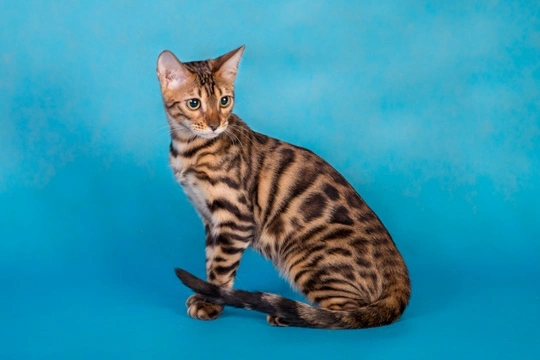
Is the Bengal cat really a good choice of pet?
The Bengal cat breed is certainly among the most eye-catching that you will see, with their distinctive shimmery coats that often form distinct lines or spots, giving them a rather exotic appearance that harks back to their very recent wild ancestry.
The Bengal cat is a hybrid breed that was originally produced from the crossing of the Asian leopard cat, a small, wildcat species, and domestic cat breeds, including tabbies and Siamese cats among others.
It is certainly fair to say that the Bengal cannot be realistically compared to the average domestic cat in terms of their appearance, temperament or other core traits-and this is of course part of the appeal for many people.
However, a reasonable number of first-time Bengal owners soon find that they have bitten off more than they can chew when it comes to Bengal ownership, and a significant number of Bengal cats are rehomed, sold on, or surrendered to shelters and Bengal rescue organisations every year as a result of this.
This poses the question in many people’s minds about whether or not a Bengal cat is really a good choice of pet-and the simple answer to this question is that they are right for some people, but not for everyone.
In this article, we will look at some of the main traits of the breed, and consider whether they are a good choice of pet for you, taking into account the different facets of their personalities.
Understanding the Bengal’s “F” ratings
When you see a Bengal cat for sale, you might also see that the advert information comes accompanied by an “F” number, described as F1, F2, F3, and so on. The “F” number indicates how close the cat in question is to their wild ancestor-For instance, an F1 cat will have one domestic parent and one Asian leopard cat parent, making them a first generation cross. Subsequent crosses dilute out the Asian leopard cat aspect to an extent, and this is reflected in terms of heredity with each F number variation taking the cat one step further away from their original wild ancestor.
Understanding how this works and vitally, knowing the F number of the Bengal cat that you own or are considering buying is really important, because the closeness or distance from the wild side of their ancestry can have a significant effect on their core traits and personalities.
Low F numbers (the ones closest to the wild ancestor-F1, F2 and F3 are uncommon today, as the breed has become established and the continual addition of the wild DNA is unnecessary in order to support the breed in perpetuity.
The average Bengal pet is F6 or higher, denoting a more distant wild ancestor. It often correlates that the lower the F number (and so, closer relation to the wild) the higher the price of the cat, although this is not always the case.
When it comes to making an informed decision on whether or not a Bengal is right for you, the F number must be taken into account. When it comes to some of the breed’s potentially less desirable traits-such as being very noisy, independent, and getting up to no good!-the closer they are to the wild ancestor, the more likely they are to display such traits.
Again, this is not a universal fact, and all cats are different-but those who find that they cannot get on with a Bengal cat may have found success with a more distant F number.
What are they like as pets?
The Bengal cat is a very loving and affectionate cat with the people they love, and they often form a very strong bond with one member of the household, and virtually ignore or be ambivalent to everyone else. If you are said person, this can of course be very endearing and something you will enjoy-but if the cat isn’t keen on anyone else that you live with, the rest of the family may be left feeling a little short changed!
Additionally, if the Bengal does decide that you are the centre of their world, they may be very demanding-almost like having a toddler following you around, in some cases-and continually but in when you are doing other things, or make a lot of noise to let you know that they want attention!
They are not really lap cats, preferring keeping busy climbing, exploring and hunting to chilling out asleep for long periods of time, but when a Bengal does deem you worthy of their affection, it is a very high accolade indeed!
They love being outdoors and will often stay out all night or for hours at a time, which sometimes conflicts with the fact that some Bengal owners prefer to keep their cats indoor only, in order to reduce the risk of injury or even theft.
They are generally very confident and not shy or nervy, and as such, they can live happily in some situations with other cats or dogs. However, they tend to prefer being the “only child,” or living with a littermate, or another cat that they were introduced to when very young.
If you would be happy with a cat that will either be very clingy or very aloof-and there is no telling until you get to know them-and you have thoroughly researched the breed and are sure what you are getting into-a Bengal may be the right choice of cat for you.
However, more so than with any other breed, make sure you take plenty of time to reach a decision, and meet as many Bengal cats as possible-and be sure that your whole family has done so too, and that everyone is in agreement!



